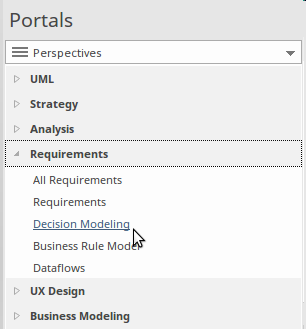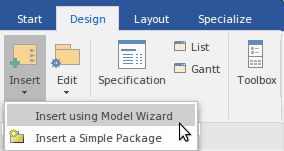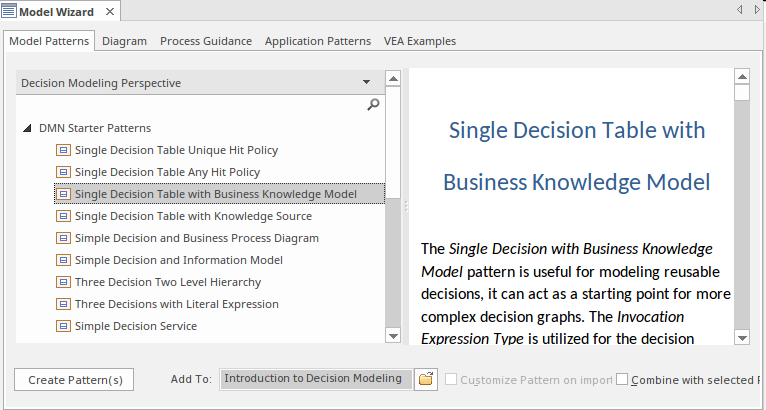| Prev | Next |
Getting Started
Getting started with a new tool is often one of the most difficult challenges facing a Business Analyst or Technical Analyst, but Enterprise Architect makes this easy by providing a number of facilities to assist the newcomer to the tool. Enterprise Architect is a large and powerful application and the breadth and depth of its coverage could overwhelm a person new to the program, but fortunately a solution to this has been built into the design.
Perspectives can be used to limit the functionality to Decision Modeling - making it easy for a Requirements Analyst or other stakeholder to get started. You still have the ability to utilize other functionality that might be useful, such as Strategic Modeling, Requirements, Business Process Modeling, Mind Mapping and more, simply by changing Perspectives - all without having to open a different tool. It is worth noting that Perspectives exist for a wide range of modeling disciplines that Enterprise Architect supports. For more information see the Perspectives Help topic.

You also have tremendous flexibility in tailoring your own environment and the user interface by setting preferences and selecting workspaces and visual styles. For more information see the Customization Help topic.

Setting up a new project is straightforward with the use of the Model Wizard Patterns (with accompanying documentation) that can be used to automatically create a DMN project structure to get you started. The Wizard can then be used to create any number of Decision Requirements diagrams as the model is developed and the problem and solution spaces are fleshed-out.

All of these facilities make it easy for a newcomer to get started, allowing you to become a productive member of a team and to start contributing to models quickly and without any delay. If you are a novice Requirements Analyst, you will be surprised how productive you can be when compared to working in text-based or other more rudimentary modeling tools. There will be challenges along the way as you push yourself and the tool to new limits, but a powerful Help system, a large community of users, comprehensive forums, a community site and first class support services will make the journey easy and informative. This image shows one of the built-in model patterns for the Decision Modeling perspective, with a range of useful patterns that can be automatically injected into your own models. Each pattern comes with accompanying documentation that explains how to use the pattern and helps ensure you follow best practice.
